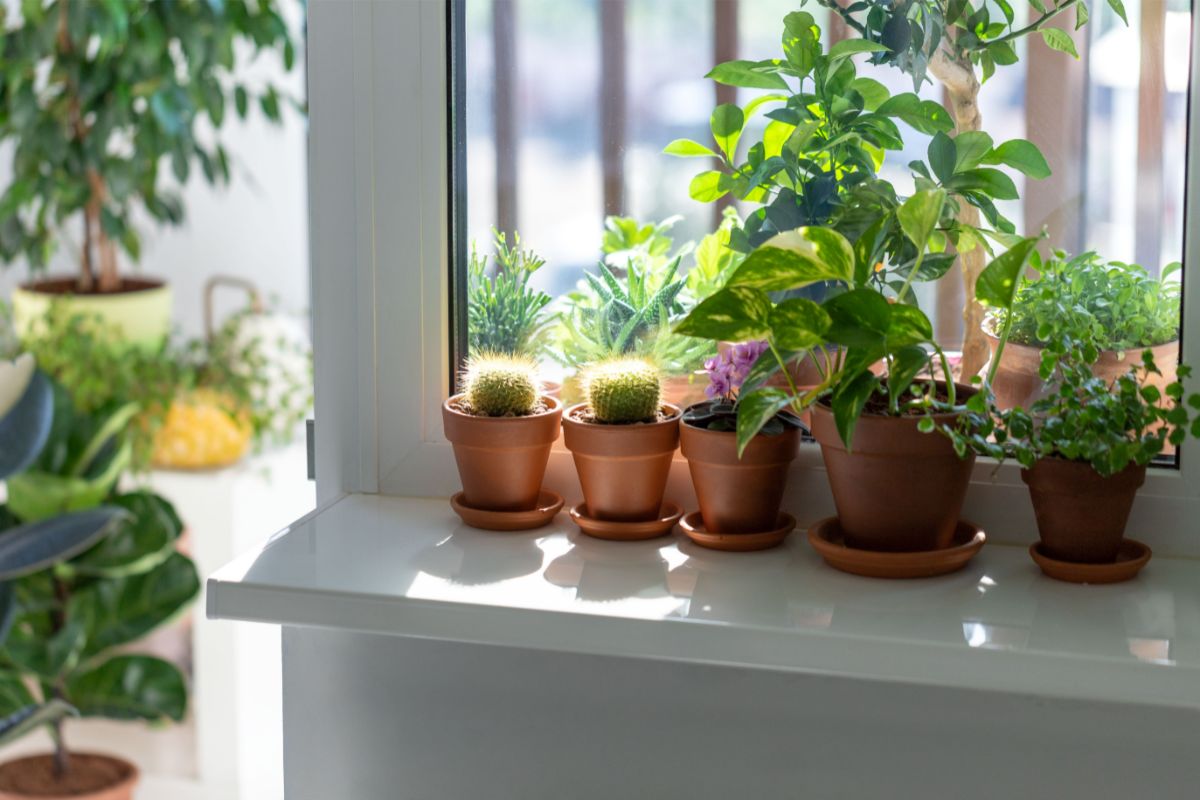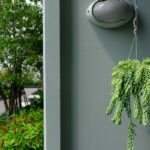If you’re lucky enough to have an east-facing window, you have access to a wonderful natural resource—the gentle morning sunlight.

East-facing windows receive bright, indirect light for most of the day, making them an ideal spot for a variety of plants that thrive in these conditions.
Choosing the right plant for your east-facing window can transform your space into a green oasis, adding life, freshness, and a touch of nature to your home.
The benefits of having plants in your living or working space are numerous. Not only do they add visual appeal, but they also purify the air and create a healthier and more pleasant environment.
Additionally, plants have been shown to reduce stress, increase productivity, and improve overall well-being.
In this guide, we will provide you with detailed information about various plant options for east-facing windows, including their light requirements, care tips, and decorative features.
Get ready to create an indoor garden that will brighten your mornings and fill your days with the joy of greenery.
1. Pothos
Pothos, scientifically referred to as Epipremnum aureum, is a versatile and popular choice when it comes to houseplants, especially for east-facing windows.
With its attractive leaves and cascading vines, pothos adds a burst of elegance and liveliness to your indoor space.
One of the reasons why Pothos is highly recommended for east-facing windows is its ability to tolerate moderate to low light conditions.
While pothos can adapt to a range of lighting environments, it thrives in indirect but bright light, making it an excellent choice for areas with filtered sunlight.
Another advantage of pothos is its low-maintenance nature. It is known for being one of the easiest plants to care for, making it suitable for both beginner and experienced gardeners alike.
In addition to its adaptability to various light conditions, pothos is also known for its air-purifying abilities.
It efficiently eliminates toxins from the surrounding air, contributing to a healthier indoor environment. This makes pothos not only a visually appealing plant but also a beneficial addition to your living or working space.
When it comes to caring for pothos, it’s important to provide them with well-draining soil and a container with drainage holes to prevent waterlogging. Pothos can be grown in water as well, making it an excellent choice for hydroponic setups or as a trailing plant in water-filled vases.
Regular fertilization with a balanced houseplant fertilizer can help promote growth and maintain the plant’s lush appearance. Pothos is also a versatile plant in terms of its decorative uses.
Its cascading vines can ascend trellises or descend hanging baskets, shelves, or bookcases. It can be placed on a windowsill or used as a trailing accent in a mixed plant arrangement.
2. Spider Plants
Spider plants, scientifically known as Chlorophytum comosum, are beloved for their graceful arching leaves and unique offshoots that dangle from long stems.
These plants are not only visually appealing but also make an excellent choice for east-facing windows, where they can thrive in the gentle morning sunlight.
One of the standout features of spider plants is their adaptability to different light conditions, making them well-suited for east-facing windows.
Spider plants can tolerate lower light levels, making them a versatile option for areas with filtered sunlight.
Spider plants are known for their ability to produce long, slender leaves, which create an elegant and cascading effect. These leaves come in various shades of green, often with stripes of white or cream, adding a touch of brightness and contrast to any indoor space.
Spider plants have a forgiving nature and are easy to care for, which makes them an excellent choice for those who may not have a green thumb or who are new to indoor gardening.
Another benefit of spider plants is their air-purifying qualities. They have been shown to effectively remove toxins such as formaldehyde and xylene from the air, helping to improve indoor air quality.
This makes spider plants not only a decorative addition to your space but also a valuable asset in creating a healthier environment for you and your family.
Spider plants are versatile when it comes to their decorative uses. They can be placed in hanging baskets, allowing their arching leaves to trail down and create a cascading effect.
They can also be displayed on shelves, countertops, or window sills, where their vibrant foliage can add a pop of greenery to any room.
3. Peace Lilies
Peace lilies, scientifically known as Spathiphyllum, are exquisite plants known for their glossy, dark green leaves and elegant white flowers.
These captivating plants not only add a bit of beauty to any space but also thrive exceptionally well in the gentle morning sunlight of east-facing windows.
One of the remarkable features of peace lilies is their ability to flourish in moderate to low light conditions, making them a perfect fit for east-facing windows.
While they can tolerate bright, indirect light, peace lilies are well-suited to areas with filtered sunlight, as the intensity of direct sun rays can scorch their delicate leaves.
East-facing windows provide the ideal balance of light, allowing peace lilies to bask in the gentle morning sunlight without being subjected to excessive brightness.
With their lush foliage and elegant white flowers, peace lilies not only enhance the visual appeal of your space but also contribute to a cleaner and fresher atmosphere.
Caring for peace lilies is relatively straightforward, making them suitable for both experienced and novice plant enthusiasts. These plants prefer evenly moist soil and slightly higher humidity levels.
Another advantage of peace lilies is their longevity when it comes to blooming. Their beautiful white flowers can last for several weeks or even months, adding a delightful touch of elegance to your space.
Once the flowers fade, you can trim the stems to encourage new growth and future blooms. The dark green leaves of peace lilies also serve as attractive foliage even when they are not in bloom, providing a lush and vibrant presence in your home or office.
Peace lilies are versatile in terms of placement and decoration. They can be showcased as standalone plants, placed on tabletops, shelves, or window sills, where their foliage and flowers can be appreciated up close.
Larger peace lilies can be used as floor plants, creating a focal point in a room. They can also be combined with other houseplants to create beautiful and harmonious indoor gardens.
It’s important to note that peace lilies are mildly toxic to pets and humans if ingested. Therefore, it’s advisable to keep them out of reach of curious pets or children.
4. Ferns
Ferns, with their delicate and feathery fronds, are enchanting plants that can bring a sense of lushness and tranquility to any indoor space.
These ancient plants have been thriving on Earth for millions of years, and their adaptability and beauty make them an excellent choice for east-facing windows.
Ferns have a unique ability to thrive in indirect or filtered light, which makes them well-suited for the moderate light conditions provided by east-facing windows.
While direct sunlight can be too intense for ferns, the gentle morning sunlight that east-facing windows offer is ideal for these shade-loving plants. Placing a fern in an east-facing window allows it to receive the right amount of light, promoting healthy growth and vibrant foliage.
One of the striking characteristics of ferns is their captivating foliage. The fronds of ferns come in various shapes, sizes, and textures, ranging from delicate and lacy to broad and bold.
This diversity of foliage adds visual interest and texture to your indoor garden, creating a captivating display. Ferns’ lush greenery can provide a refreshing and calming atmosphere, making them an excellent choice for creating a peaceful oasis in your home or office.
Caring for ferns requires attention to their specific needs. These plants prefer consistent moisture, and it’s crucial to keep their soil evenly moist without allowing it to become waterlogged.
Regular watering is necessary to maintain the proper humidity levels, especially in indoor environments that tend to be drier.
Ferns can benefit from misting their fronds or placing them on trays filled with water and pebbles to increase humidity levels and prevent their delicate foliage from drying out.
Fertilizing ferns with a balanced, water-soluble houseplant fertilizer during the growing season can help provide them with essential nutrients for healthy growth.
In terms of decorative uses, ferns can be versatile and adaptable. They can be placed in hanging baskets or mounted on walls to showcase their cascading fronds.
Final Thoughts
The best plants for east-facing windows are those that thrive in moderate light conditions. They not only add beauty and greenery to your space but also adapt well to the gentle morning sunlight that east-facing windows provide.
These plants are relatively low-maintenance and offer a range of benefits, from air purification to creating a tranquil atmosphere. Choose the perfect plant for your east-facing window and enjoy the beauty and benefits it brings to your indoor environment.
- Best Hanging Plant For Low Light - September 4, 2023
- Best Indoor Plants Florida - August 28, 2023
- Best Plants For Bathroom Smells - August 21, 2023








